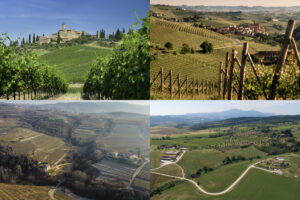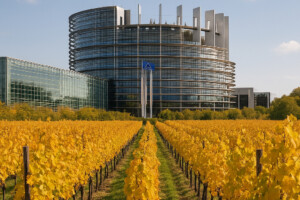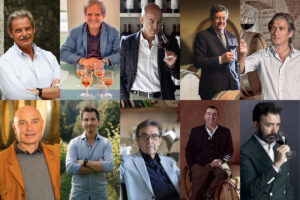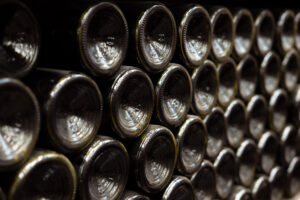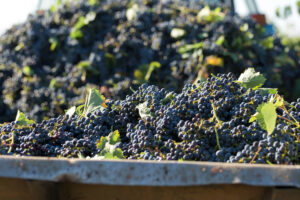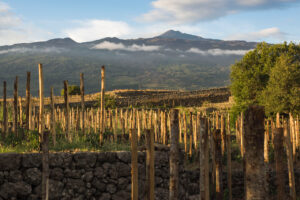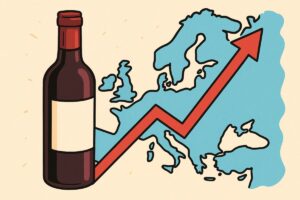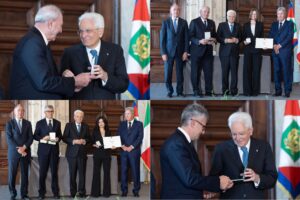First of all, we need to focus on the quality of wine. Then, invest in the environment and landscape, sightseeing, cultural, historical and archaeological treasures, not forgetting to highly distinguish territorial identity. These are just some of the 10 strengths, which are the foundation of new enogastronomic tourism in Italy. Italian communities of “high wine vocation” drew up the list. This is the result of the survey “The puzzle of the offer: the pressure of local territories and risks of promoting provincialism”, conducted by Wine Cities and the Research Institute, Censis Services S.p.a., for the “Forum on enogastronomic tourism”, held in Alberese (Grosseto) until June 6th. It is in collaboration with the Region of Tuscany, the Federation of the Routes of Wine, Oil and Flavors of Tuscany and the Province and Municipality of Grosseto (info: www.cittadelvino.it).
The survey involved 250 of the more than 1,700 municipalities interested in wine and food tourism. They were selected on the basis of presence on the territory of major wineries, restaurants, museums, wine or wine routes, which was considered the main asset on which to focus, to counter future threats facing the tourism sector: most notably, the drop in demand due to the difficult economic situation. The first strength is the quality of the base product, or wine (for 76% of municipalities); the second is environmental quality and landscape (48.8%); the third is tourist, cultural, historical and archaeological attractions (28.1%); the fourth is distinguishing territorial identity (24.8%); the fifth is building differentiated itineraries (18.6%); the sixth is Italian tradition and cultural innovation (14.9%); the seventh is connecting with national and international networks (13.6%); the eighth is global recognition of Italian territories (12.8%); the ninth is diversifying the offer of Italian food services (12.8%) and the tenth is variety of the base product (the variety of Italian wine from ancient cultivations to its multiple typologies, for 11, 2% of the municipalities surveyed).
From the Forum in Alberese, Wine Cities proposed that concrete actions are necessary to improve the situation, especially to improve the effectiveness of key tools, not yet at full potential. For example, the 154 Wine Routes, which are not all equally functional and efficient: the creation of one national directive to guarantee sharing minimum standards of quality (including tourist offices, wine cellar reception, catering and accommodation); from updating and training for professionals to refinancing the Act on Wine Routes (268/99). “A map of operational proposals,” says the president of Wine Cities, Giampaolo Pioli, “is what we propose to develop, submit to the attention of the institutions, the Minister of Tourism Michela Brambilla and the relevant ministries and to the Italian regions. Fragmentation does not help and the lack of a national policy on food and wine tourism is evident. We will ask for support from the currently absent cities and, above all, financial support that is lacking”. Focus - Wine tourism is flying in France and Spain, with 7.5 and 6 million wine lovers
Wine tourism is not confined just to Italy, where there are 6 million wine fans. It is off the ground and flying in France and Spain, where, respectively, 7.5 and 6 million wine tourists go each year to discover the flavors and territories of both countries. These are the facts from the “Forum on enogastronomic tourism”, sponsored by the Cities of Wine and held in Alberese (Grosseto) until June 6th and in collaboration with the Region of Tuscany, the Federation of Routes of Wine, Oil and Flavors of Tuscany, the Province and Municipality of Grosseto (info: www.cittadelvino.it).
From Bordeaux to Champagne, Alsace to Burgundy, “7.5 million wine lovers,” - explains Philippe Calamel, national secretary of the “Union Francaise des Itinéraires Culturale”, visit the great French territories every year”. In France 2 wine tourists out of three are French, while of the 2.5 million foreigners who visit the wine regions of France, 27% is from Belgium, 21% from Britain and 15% from Germany. Europe, including Switzerland, then, “supplies” 82% of the total tourists.
From Rioja to Duero, Spanish wine tourism also scored a positive growth trend, despite the fact that Spain is one of the hardest hit by the economic crisis. 6 million wine tourists travel the 21 wine routes of Spanish wine denominations that have a great potential for development and as Ana Lopez Lopez of Aceviño explained, “the Wine Cities of Spain want to reach 10 million visitors within a few years”.
Copyright © 2000/2025
Contatti: info@winenews.it
Seguici anche su Twitter: @WineNewsIt
Seguici anche su Facebook: @winenewsit
Questo articolo è tratto dall'archivio di WineNews - Tutti i diritti riservati - Copyright © 2000/2025










